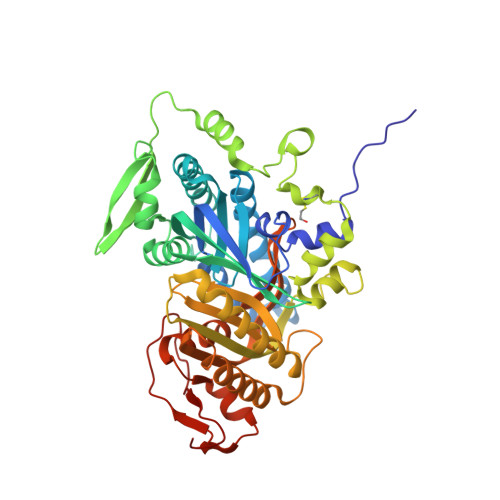Crystal structure of human soluble adenylate cyclase reveals a distinct, highly flexible allosteric bicarbonate binding pocket.
Saalau-Bethell, S.M., Berdini, V., Cleasby, A., Congreve, M., Coyle, J.E., Lock, V., Murray, C.W., O'Brien, M.A., Rich, S.J., Sambrook, T., Vinkovic, M., Yon, J.R., Jhoti, H.(2014) ChemMedChem 9: 823-832
- PubMed: 24616449
- DOI: https://doi.org/10.1002/cmdc.201300480
- Primary Citation of Related Structures:
4OYA, 4OYB, 4OYI, 4OYM, 4OYO, 4OYP, 4OYW, 4OYX, 4OYZ, 4OZ2, 4OZ3 - PubMed Abstract:
Soluble adenylate cyclases catalyse the synthesis of the second messenger cAMP through the cyclisation of ATP and are the only known enzymes to be directly activated by bicarbonate. Here, we report the first crystal structure of the human enzyme that reveals a pseudosymmetrical arrangement of two catalytic domains to produce a single competent active site and a novel discrete bicarbonate binding pocket. Crystal structures of the apo protein, the protein in complex with α,β-methylene adenosine 5'-triphosphate (AMPCPP) and calcium, with the allosteric activator bicarbonate, and also with a number of inhibitors identified using fragment screening, all show a flexible active site that undergoes significant conformational changes on binding of ligands. The resulting nanomolar-potent inhibitors that were developed bind at both the substrate binding pocket and the allosteric site, and can be used as chemical probes to further elucidate the function of this protein.
- Astex Pharmaceuticals, Cambridge Science Park, Cambridge, CB4 0QA (UK).
Organizational Affiliation:



















